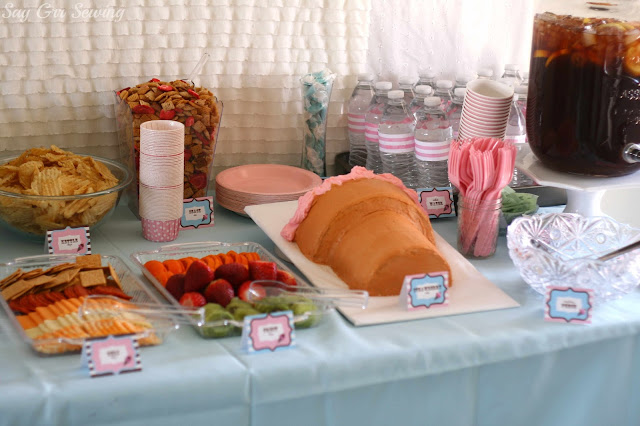When I was looking for ideas for my sweet sister-in-love's birthday I happened again across this guide for binding a paperback that I'd bookmarked quite some time ago. I loved the idea, but I decided to adapt it and make the book too, so that I could use high-quality watercolor paper. (This particular sister-in-love is a fantastic artist!)
I have an old Reader's Digest craft book that is a sort of primer on a variety of hobbies, and it has a section on bookbinding, so I used that as a starting point. I had to do things a bit differently though, partly because my materials are a bit different and mostly because I don't own most of the recommended tools.
To start, I folded my paper (affiliate link, I used less than half of the sheets) into signatures. I'd planned for 4 sheets per signature, but the paper was quite a bit sturdier than I'd expected, and I ended up only using 1 sheet per signature. Then I stacked the signatures, and made lines at intervals along the folded edge of the stack with a pencil. I poked holes in each mark with a darning needle, then bound them together using waxed linen cord and linen binding tape (affiliate links). I unfortunately tore the paper in a couple of spots by pulling the thread toward me instead of in the direction of travel, but it still worked.
Here's the outside of the book at this stage:
And standing:
After sewing the pages, I glued the endpapers (I used scrapbooking paper) on... they are only glued in a small strip near the folded edges, and underneath the tapes. Then I cut the front edge of the pages to be more even, but I wish I hadn't because my cutting skills are abysmal and it ended up much messier than if I'd just left it! I also pressed my thumb into the front edge while gently hammering the sewn edge to create a gentle curve (but it really didn't do much!).
Next, I glued on a super (a strip of white muslin fabric), but I forgot that I was supposed to trim it to be shorter than the spine! I glued the tapes down at the same time, and trimmed them to the same width as the super. I used this glue. (Affiliate link... I have heard that Elmer's glue works perfectly well too.) I also added a headband (affiliate link) at the top and bottom edges along the fold. At this point the book was finished, and just needed a cover!
For this section, I followed the instructions in the guide. I used two sheets of chipboard and this leather (affiliate links)... the leather was just a tad thicker than I think would have been best, but still worked. I designed a front and back cover in the Silhouette studio, cut it from paper with the Silhouette, and used that as a guide to cut the chipboard by hand with a utility knife. I was hoping to cut the chipboard with the Silhouette, but it was too thick to feed properly. Cutting it was by far the most difficult part of all! I did it over several evenings and had to take quite a few breaks because my hands were cramping up. It was totally worth it though,
I glued on backing pieces, then glued the leather to that. I used a knitting needle to press the leather into all of the nooks and crannies... I had to go over it all several times to stretch the leather enough!
Then I added the spine piece and trimmed, folded, and glued the edges of the leather:
The finished cover:
And the back:
Then it was time to attach the cover to the book! What that entailed was gluing the endpapers- along with the super and linen tapes- to the inside of the cover, then tying a cord tightly around the spine and leaving it under a stack of heavy books overnight to dry. And it was done!
I am so happy with the end result!
That being said, there are a few things I would do differently next time... I would gently curve the spine piece before applying the cover:
I would either not cut the front edge, or use some pieces of wood and clamps to hold it tightly while cutting for a smoother result (If I really started to do a lot of bookbinding I would probably invest a bookbinding press).
I'd prefer to actually sew the headband instead of using a premade strip, because I don't like the ridges the strip left (although I suppose those could be avoided by cutting the strip slightly narrower or a lot wider than the spine), and I should have used a smoother cord for tying the spine.
I would also be more careful and accurate in measuring and cutting the spine piece of chipboard... mine is wider than it was supposed to be, which means that the front edges of the pages are closer to the front edge of the covers than they should be.
Here's a picture of the endpapers:
Even though I'd change a few things next time, I pleased with this for my first-ever book!
It's not going to replace sewing as my hobby, but I would definitely like to make more books in the future. And if my writing relatives finish some stories I would be delighted to make hand-bound copies of those! ;-)
Thanks for stopping by,










































































